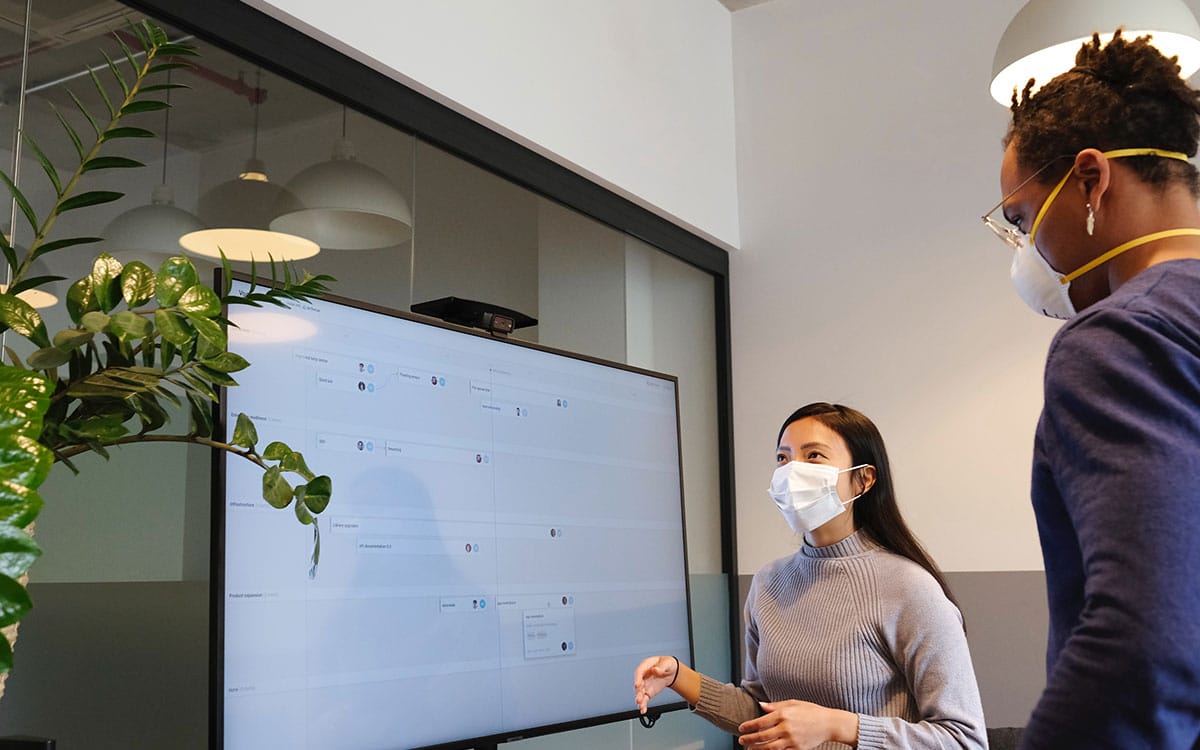Article by Stefan Debois, CEO of Survey Anyplace
HR professionals are the heart of each business. Think about it – they pump life throughout the company. They are the ones who bring in new hires that will mold the business into a better version of itself. They are the ones who make sure employees stay happy and healthy (in a sense). And, when someone moves on from a business, they are the ones who listen to the employee’s experiences and make meaningful changes based off of their learnings.
But let’s be honest, that’s just scratching the surface of what HR professionals do.
An effective HR professional is also a jack of all trades. They are expected to thoroughly communicate with employees and management, understand and implement any updates in legislation in regards to things such as health plans or benefits, aid in resolving workplace conflicts, make sure everyone gets paid on time and so much more.
While all of this is essential to a healthy business, it’s also a lot to ask from one position, which is exactly why technology solutions are so important to HR professionals. Many HR teams rely on tools to help with employee onboarding and offboarding, payroll, benefits administration, COBRA administration, ACA compliance and more.
However, two other tools are often overlooked in the HR field. HR surveys and assessments provide insight essential to the health of a business. If created and used correctly, they have the ability to significantly boost productivity and employee engagement.
Types of Surveys and Assessments
Surveys and assessments can come in many forms, but for the sake of this post, we will cover how simple surveys and assessments can help HR professionals boost productivity and engagement in three specific applications.
- Job application surveys
- Job satisfaction surveys
- 360 review assessments
Job Application Surveys
Congratulations – your business is growing!
Bringing on new hires is a big deal. These new employees will be with your company for years – hopefully – and will help shape it with their skills and ideas. That’s why it’s so essential to bring on the right people who align with the business’s personality, mission, beliefs and goals.
Job application surveys help identify those individuals.
One example of a job application survey done right is Heineken’s Go Places survey. This interactive survey helps them learn about potential employees’ personalities. It asks fun, quirky but meaningful questions that help gage if the participant is independent, a team member, has an entrepreneurial spirit, etc.
At the end of the survey, the participant is provided with an explanation of their results and the opportunity to submit their CVs:
In addition to giving HR professionals insight into a potential employee, these surveys provide those who may be interested in a career at your business a glance into its culture. Is it a formal setting or more laid back? Are the people there very serious or appreciate a good sense of humor?
Good workers boost engagement, so learn more about your potential employees and help them learn more about you!
Job Satisfaction Surveys
As many as 70 percent of American workers are not reaching their full potential in the workplace.
That’s according to a study by Gallup, which adds that 52 percent are not engaged and 18 percent are actively disengaged.
But why? And what can be done about it?
One way those in HR can combat these statistics is to simply ask workers how they’re feeling professionally using a job satisfaction survey. These surveys provide immediate feedback from employees about how they’re feeling, what is frustrating them and how they think they could be more engaged in their jobs. Understanding what is happening is the first step to creating meaningful change that can take the business to the next level.
One example of how this can be executed is from SEO Software company CanIRank, which asked its consultants to gauge their experiences, overall satisfaction and areas where they could use more support:
Asking questions such as the following will provide HR professionals with clarity about where there are issues so they can work with management to address them:
- Do you feel valued for your work?
- Are your job responsibilities clearly defined?
- Do you feel like your job utilizes your skills and abilities effectively?
The consequences of unhappy employees can be drastic, but job satisfaction surveys will help HR professionals address any issues so businesses can keep engagement high and retain talented employees.
“The happier your employees are, the more productive and loyal they will be to you. And in a highly competitive world, you want to train up and then keep your employees after what you have invested in them,” Michael J Schiemer, Owner of Bootstrap Business said in his post on this topic. “You don’t want them to go and work for your competitors, do you?”
360 Review Assessments
Most employees collaborate with several departments and positions to accomplish their work. That’s why a review by a single manager doesn’t provide a full picture of the worker’s performance, abilities or skill set. However, 360 reviews help combat this one-sided evaluation process.
These assessments collect information, insight and data from an employee’s manager, teammates and direct reports. This is a more comprehensive approach to evaluations, and it provides deeper, more thorough insight across the board. In fact, more than 85 percent of the Fortune 500 companies use this tool to collect feedback according to Jack Zenger, CEO of strengths-based leadership development firm Zenger/Folkman.
While the questions in these assessments are important, perhaps even more essential is training those participating in the reviews.
Sharlyn Lauby, author of HR Bartender blog, wrote in one of her posts that 360 reviews provide useful opportunities to receive anonymous feedback, increase self-awareness across the board at an organization and encourage progressional development. However, she also cautioned that these benefits are only seen if the reviews are used for the right reasons and utilized in a culture that makes such assessments comfortable – not used as an opportunity to vent about other workers.
“Multi-rater reviews offer individuals and organizations a unique opportunity for enhanced feedback. To capitalize on the opportunity, the organization must clearly define the objectives, train the raters, and design a process that encourages open discussion.”
The 360 review assessments should help employees identify areas of strength as well as where improvements can be made. If they are used to bring workers down, then that can lead to demoralization.
Survey and Assessment Tips
Now that we’ve established a few types of surveys and assessments that will help boost productivity and engagement, it’s also important to know how to set these up. There are plenty of survey maker tools available, but some basic knowledge will still make the process easier and increase the likelihood that participants stay engaged.
Design
These surveys and assessments might be internal for the most part, but adding some design elements will help capture and focus participants’ attention.
Choose one or two colors from the logo and use them throughout the survey or assessment. This little detail will make them appear more professional and personalized to the business. Also, respect whitespace and alignment and use one font. No one likes to take a sloppy looking assessment or survey.
Make It Interactive
As simple as it sounds – make your survey or assessment fun!
Each employee probably has roughly a million tasks that need attending to at any given moment, so you’re going to need to make sure your survey or assessment really grabs their attention and doesn’t let go until they hit that “submit” button.
Add photos, videos, Gifs – anything interactive will boost participation and engagement. There are several websites that offer these for free.
Vary Question Type
Redundancy is the nemesis of your survey or assessment. However, switching up the types of questions you include will help break up that pattern and decrease the likelihood your survey or assessment will transform employees into zombies. Instead of asking participants to only answer multiple-choice questions, include others such as picture choices, scales or even emoji questions.
HR professionals have a plethora of responsibilities, but surveys and assessments will provide the insight needed to help them increase business engagement and productivity.
Article by Stefan Debois, CEO of Survey Anyplace
Stefan Debois is the founder and CEO of Survey Anyplace, an online software tool to create engaging surveys, quizzes and assessments. Besides kitesurfing, Stefan is passionate about the use of technology to build professional relationships with people, at scale. Connect with Stefan on Twitter and LinkedIn.
COBRA Compliance Without the Chaos
Struggling with COBRA compliance? Discover how PlanSource simplifies COBRA administration with automation, real-time accuracy, and expert support—reducing risk and reclaiming HR’s time.
Empathy, Innovation & Action: Top Takeaways from HR Leaders Who Spoke at Eclipse
Empathy, Innovation & Action:Top Takeaways from the HR Leaders Who Spoke at...
Charting the Future of PlanSource: Our Vision for What’s Ahead
Discover how PlanSource unveiled game-changing AI innovations at Eclipse 2025, transforming how HR leaders manage benefits and how employees choose them. The future of benefits starts here.




